Hypophosphatemia Symptom Checker
What symptoms are you experiencing?
Select all that apply to help identify potential causes
Potential Causes & Recommendations
When blood phosphate levels slip below the normal range, Hypophosphatemia is the term doctors use to describe the condition. It can trigger a range of gut‑related complaints that many patients overlook. Understanding hypophosphatemia helps you spot the warning signs before they worsen.
What exactly is hypophosphatemia?
Hypophosphatemia means serum phosphate concentrations below 2.5 mg/dL (0.81 mmol/L) in adults. Phosphate is a mineral that fuels every cell, builds bone, and supports nerve signaling. The kidneys, intestines, and hormones constantly balance its levels.
Why phosphate matters in the body
Phosphate acts as a key component of ATP, the energy currency of cells, and forms the backbone of DNA and RNA. It also helps regulate acid‑base balance and muscle contraction. When phosphate drops, energy‑dependent organs feel the strain first.
Gastrointestinal symptoms linked to low phosphate
Patients with Hypophosphatemia often report:
- Persistent Diarrhea due to impaired intestinal motility and electrolyte imbalance.
- Nausea or vomiting, especially after meals
- Abdominal cramping that mimics IBS
- Loss of appetite, leading to further nutritional deficits
The gut’s ability to absorb nutrients weakens when phosphate‑dependent transporters in the Small intestine slow down because they lack the energy needed for active transport. This creates a vicious cycle: poor absorption fuels more phosphate loss.
Common GI‑related causes of hypophosphatemia
| Cause | Mechanism | Typical lab hints | First‑line fix |
|---|---|---|---|
| Chronic diarrhea | Loss of phosphate‑rich fluids | Low urinary phosphate, high stool phosphate | Rehydration + oral phosphate salts |
| Malabsorption (celiac, Crohn’s) | Damaged villi reduce phosphate uptake | Low serum phosphate, normal urinary loss | Treat underlying disease, supplement |
| Antacid overuse | Aluminum or calcium bind phosphate in gut | Elevated serum calcium, low phosphate | Switch to non‑binding agents, limit dose |
| Refeeding syndrome | Rapid glucose influx drives phosphate into cells | Sudden drop after nutrition start | Slow caloric increase, proactive phosphate |
| Chemotherapy (e.g., cisplatin) | Renal tubular toxicity increases urinary loss | High fractional excretion of phosphate | Hydration, dose adjustment, supplement |
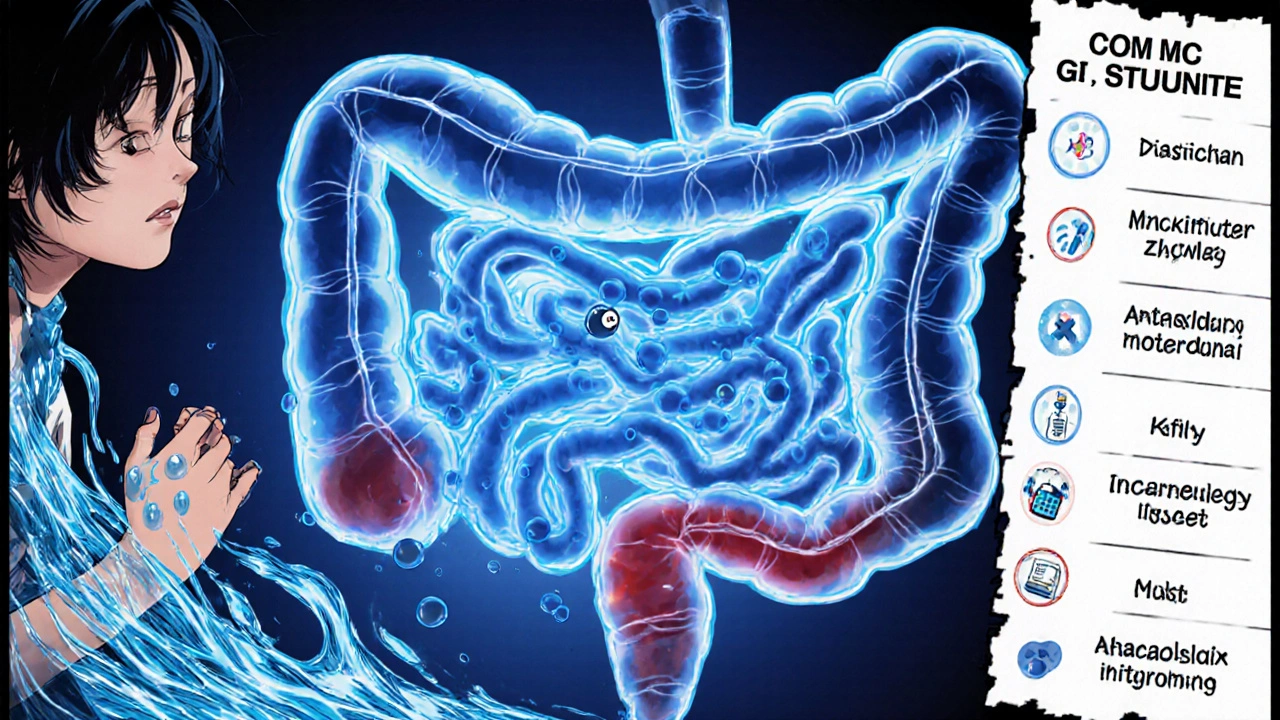
How the body loses phosphate: kidneys and hormones
The Renal tubules reabsorb most filtered phosphate under hormonal control. Two key regulators are Parathyroid hormone (PTH) which reduces reabsorption, and active Vitamin D which enhances intestinal uptake. When PTH spikes-often in response to low calcium-phosphate excretion rises, aggravating hypophosphatemia.
Diagnosing low phosphate in the clinic
Doctors start with a serum phosphate test. Normal adult range is 2.5-4.5 mg/dL. If the result is low, they check:
- Urinary phosphate excretion (fractional excretion)
- Serum calcium, magnesium, and vitamin D levels
- Complete metabolic panel for acid‑base status
- Stool studies if diarrhea is suspected
Imaging isn’t routine, but in chronic cases a bone density scan can reveal early osteomalacia caused by long‑term phosphate deficit.
Managing hypophosphatemia with gastrointestinal focus
The treatment plan hinges on the root cause.
- Replace the lost phosphate. Oral sodium or potassium phosphate tablets are first choice for mild cases. Intravenous phosphate is reserved for severe drops (<1.0 mg/dL) or when the gut can’t absorb.
- Correct the underlying GI problem-stop laxative abuse, treat infection, manage inflammatory bowel disease, or adjust antacid therapy.
- Boost dietary intake. Foods rich in phosphate include dairy, meat, nuts, and legumes. For vegans, fortified plant milks and whole grains help.
- Monitor electrolytes daily during the first week, then weekly until stable.
- Address hormone imbalances. If PTH is high, calcium supplementation and vitamin D repletion can lower phosphate loss.
Patients with Refeeding syndrome require a very gradual increase in calories and proactive phosphate supplementation. Likewise, those on Chemotherapy should have phosphate checked before each cycle.

Special scenarios you might encounter
Chronic alcoholism often leads to malnutrition and a blunted vitamin D response, both of which lower phosphate. Providing thiamine, vitamin D, and a balanced diet can reverse the trend.
In patients with persistent Diarrhea, consider stool cultures, celiac screening, and a trial of a low‑FODMAP diet to pinpoint triggers.
When Antacids are the culprit, switch to H2 blockers or proton‑pump inhibitors that do not bind phosphate.
Prevention tips for long‑term health
- Include a source of protein and dairy at each meal to keep phosphate intake steady.
- Avoid excessive over‑the‑counter antacid use without medical guidance.
- Stay hydrated, especially if you have a history of laxative use or diarrhea.
- Ask your doctor for a yearly phosphate check if you have inflammatory bowel disease, chronic kidney issues, or are on long‑term chemotherapy.
- Consider a vitamin D supplement during winter months in the UK to support intestinal absorption.
Frequently Asked Questions
What blood level defines hypophosphatemia?
A serum phosphate below 2.5 mg/dL (0.81 mmol/L) in adults is generally considered hypophosphatemia.
Can low phosphate cause diarrhea?
Yes. Phosphate loss reduces the energy available for intestinal cells, weakening their ability to absorb water and electrolytes, which can trigger watery stools.
How quickly should phosphate be replaced?
Mild cases can be corrected with oral supplements over 24‑48 hours. Severe drops (<1.0 mg/dL) need intravenous phosphate administered in a monitored setting, usually within a few hours.
Are there foods that should be avoided?
Highly processed foods low in natural phosphate (e.g., refined sugars, low‑fat snacks) provide little benefit. Instead, focus on dairy, meat, fish, nuts, and legumes.
Is hypophosphatemia dangerous for the heart?
Severe phosphate depletion can cause cardiac arrhythmias because the heart relies on ATP for rhythm stability. Prompt correction reduces this risk.
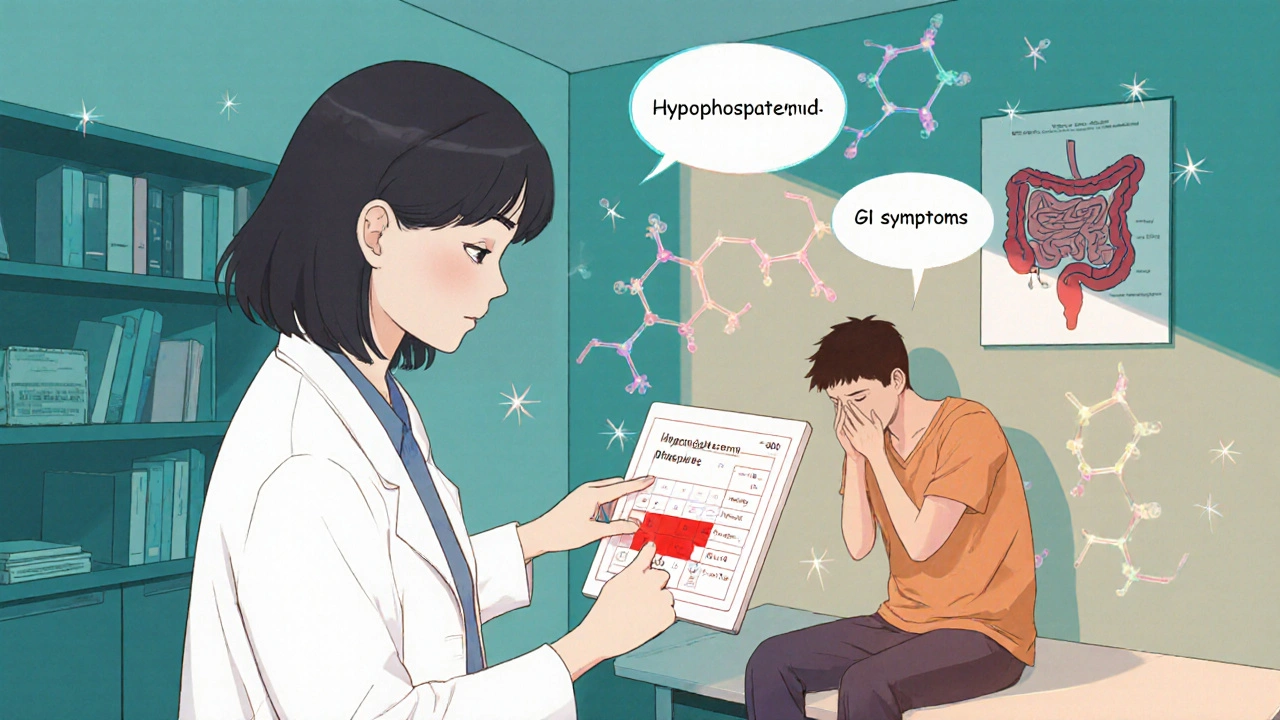


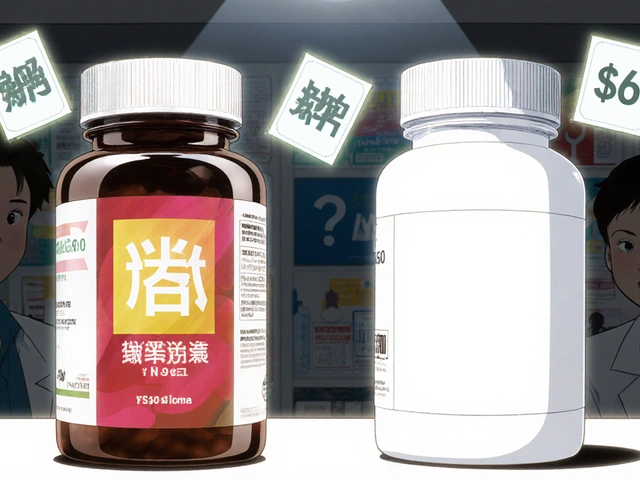
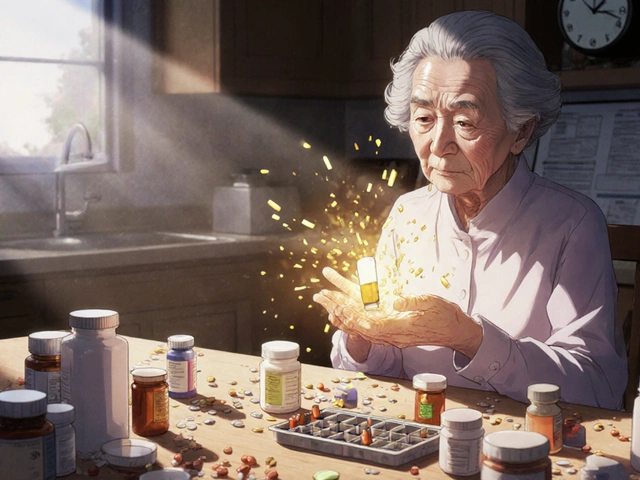
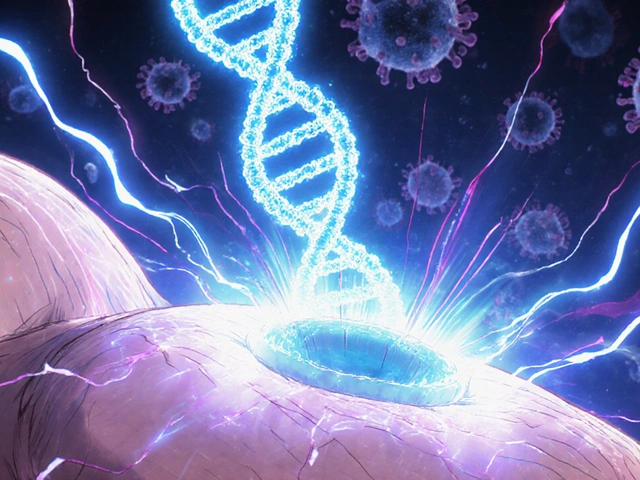


Posts Comments
Matthew Miller October 18, 2025 AT 21:08
Folks, if you’ve ever felt that weird wave of nausea after a sudden diet shift, chances are your phosphate levels are playing hide‑and‑seek. Low phosphate saps your cellular batteries, making the gut feel like a broken treadmill. Re‑hydrating with a pinch of oral phosphate salts can kick‑start the energy flow and calm those restless cramps. Think of it as giving your intestines the spark plugs they need to fire on all cylinders. Stay proactive and watch those electrolytes like a coach watching a rookie’s form.
Tracy O'Keeffe October 26, 2025 AT 20:33
Honestly, this whole phosphate hype is just another overblown medical fad, definetely not worth the hype.
Rajesh Singh November 2, 2025 AT 19:13
Many patients wander through clinics oblivious to the silent thief that is hypophosphatemia.
They treat the symptoms-diarrhea, nausea, loss of appetite-as isolated incidents rather than parts of a systemic failure.
This myopic view betrays a deeper moral failing to treat the body as an interconnected whole.
Phosphate, the unsung hero of ATP, fuels every cellular process, from muscle contraction to DNA replication.
When its levels plunge, the gut’s motility falters, leading to the very gastrointestinal distress we see.
It is our ethical duty as caregivers and informed individuals to scrutinize the root cause before prescribing symptomatic relief.
The cascade begins with either renal loss, malabsorption, or iatrogenic factors like aggressive antacid use.
Ignoring these pathways is tantamount to willful neglect, a betrayal of the patient’s trust.
Moreover, the refeeding syndrome illustrates how a well‑intentioned nutritional plan can backfire catastrophically if phosphate is not monitored.
Physicians must therefore be vigilant, ordering serum phosphate tests alongside calcium and vitamin D.
Patients should be educated to recognize persistent watery stools as a red flag rather than a trivial inconvenience.
Supplementation, whether oral sodium phosphate tablets or cautious IV administration, must be tailored to severity, never a one‑size‑fits‑all.
In chronic cases, bone density scans can reveal the hidden cost of prolonged deficiency-osteomalacia.
The moral of the story is simple: address the deficiency at its source, and the gastrointestinal symptoms will recede like a tide.
Only then can we claim we have honored the principle of do‑no‑harm in the most literal sense.
Drew Waggoner November 8, 2025 AT 14:06
What Rajesh outlines is spot‑on: you can’t treat the gut in isolation when phosphate is the underlying engine. The clinical workup should start with a fasting serum phosphate level, then move to urinary fractional excretion to differentiate renal loss from intestinal loss. Adjusting the supplementation route based on severity avoids the pitfalls of rapid intracellular shifts that can precipitate cardiac arrhythmias. In practice, a stepwise protocol-oral replacement for mild cases, IV infusion for values below 1.0 mg/dL-keeps patients stable while the primary cause is addressed.
Mike Hamilton November 14, 2025 AT 09:00
Phosphate low can mess up your tummy big time. It’s like the body’s power plug gets loose. Drink some water with a little salt and phosphate tablets if docs say it’s ok. Watch your diet and dont skip meals. It helps keep the gut moving smooth.
Lyle Mills November 20, 2025 AT 03:53
Low serum PO4 triggers intestinal dysmotility affecting absorption pathways ultimately leading to osmotic diarrhea and metabolic acidosis without extensive clinical commentary.
Barbara Grzegorzewska November 25, 2025 AT 22:46
Frankly, the medical establishment loves to downplay phosphate deficiency because it suits their agenda of keeping the public in a state of perpetual nutritional ignorence, and that’s just plain stupid.
Nis Hansen November 29, 2025 AT 10:06
While I respect the perspective raised, the empirical evidence underscores that timely phosphate repletion, paired with targeted treatment of the inciting gastrointestinal disorder, yields measurable reductions in symptom severity within 48 hours. This approach aligns with best‑practice guidelines and should be adopted universally to optimize patient outcomes.
Avril Harrison December 2, 2025 AT 21:26
It’s interesting to see how different cultures handle low‑phosphate diets-some rely on traditional fermented foods that naturally boost phosphate, while others just wing it with supplements. Either way, keeping an eye on gut health is key.
Write a comment